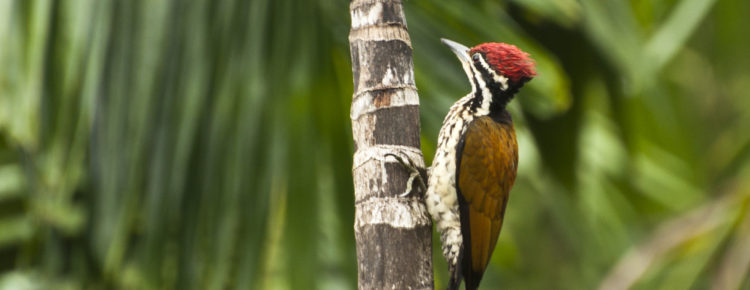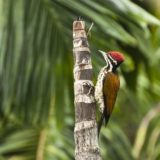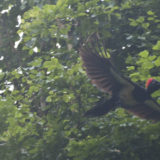Woodpeckers have been one of my favorite birds from childhood since it was very rare to spot one and it was one of the first birds which I saw making holes on huge and strong trees in search of food. 25 years later, I got to observe so many different species of woodpeckers and learned their important role in forest ecosystem and how cool they are. The woodpeckers belong to family Picidae and worldwide we have approximately 230 species and in the Western Ghats alone we have close to 12 species. The common names of the twelve species are White-bellied Woodpecker, Greater Flameback, Lesser Flameback, Common Flameback, Lesser Yellownape, Rufous Woodpecker, Speckled Piculet, Heart-spotted Woodpecker, Brown-capped Pygmy Woodpecker, Yellow-crowned Woodpecker, Streak-throated Woodpecker and White-naped Woodpecker. Some of the coolest adaptations of the woodpeckers are their long tongue, shock absorbing capability to avoid head injury and drumming. The tongue of woodpeckers has backward-projecting barb tips and sticky saliva which helps it to grab the larvae. In order to avoid head impact injury, studies have found that the woodpeckers sharp beak, neck muscles and brain orientation helps the woodpecker to distribute the force generated around the skull while pecking. Drumming is a special feature of the woodpeckers where they choose different resonant objects to communicate. They use the drumming for finding mate, territorial message, food source availability and as an alarm call for approaching predators.
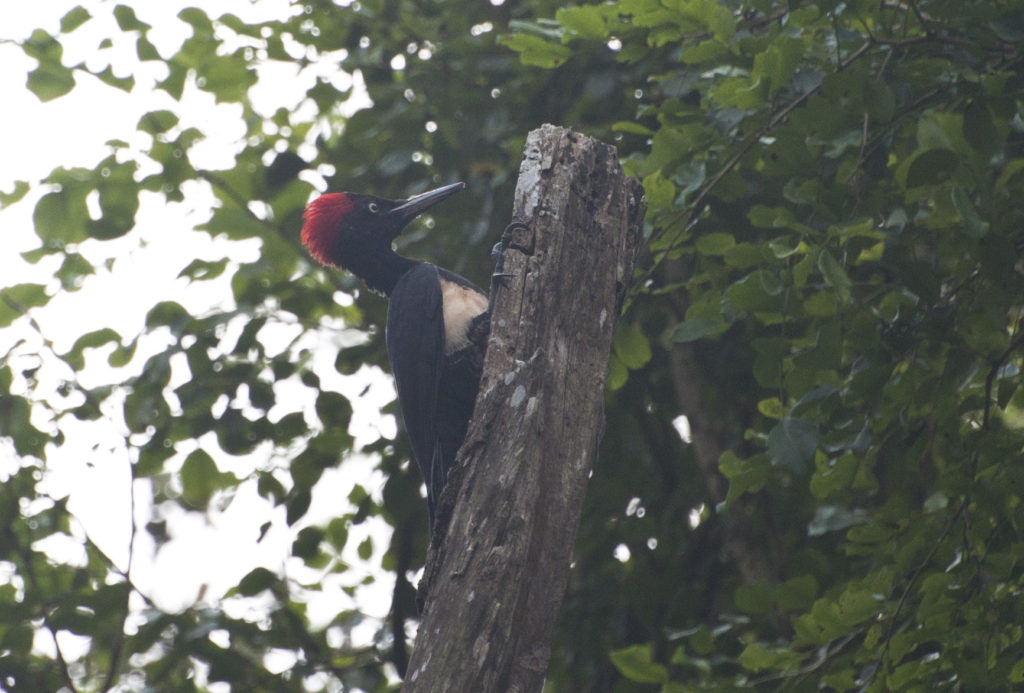
During my field observation I have observed around 7 species of woodpeckers and they are really amazing. The first species is the White-bellied Woodpecker. These woodpeckers are the largest of all the woodpeckers species found in the Western Ghats at a size of 48 cm. They are noisy while foraging and the wood pecking sound of these species is a loud drumroll. These woodpeckers were mostly observed looking for larvae on mid-level and canopy level.
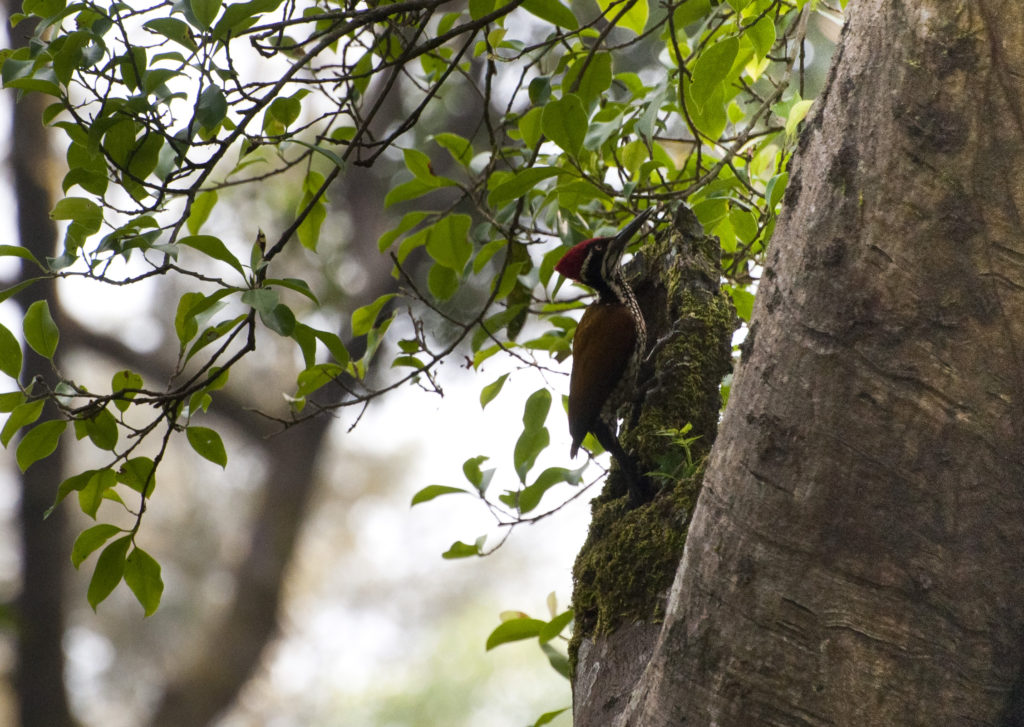
The second species was the Greater Flameback (33 cm)and it was one of the most easiest to spot. They are noisy when they are actively feeding by calling out to each other. The greater flameback was observed feeding on decaying stems at understory as well as canopy level.
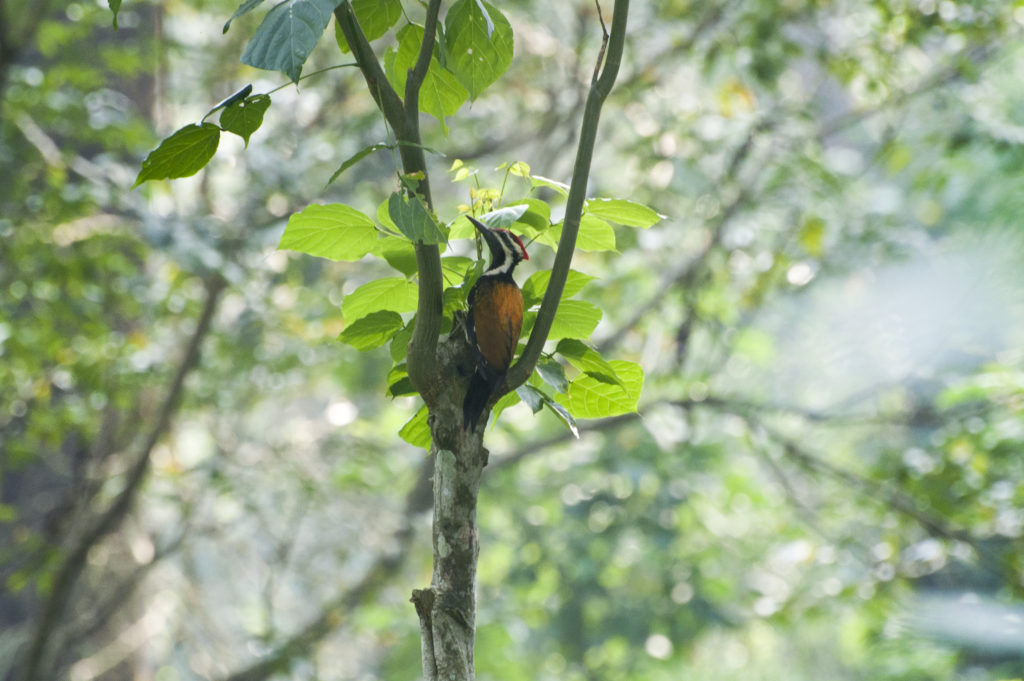
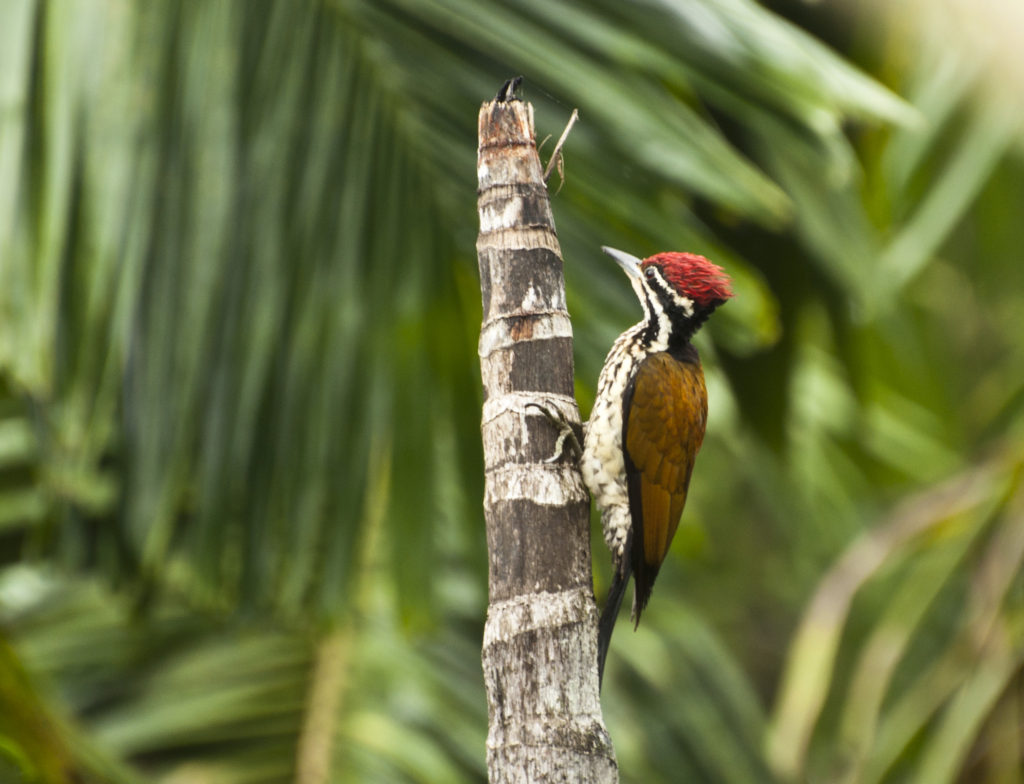
The next two species are the Lesser Flameback (Black-rumped flameback) and Common Flameback (26-30 cm), they look very similar to Greater Flameback but the species can be differentiated based on their morphology. Similar to the Greater Flameback, the woodpeckers were observed feeding on both the mid and canopy level trees. Unlike the Greater Flameback, I found to spot these two species much harder.
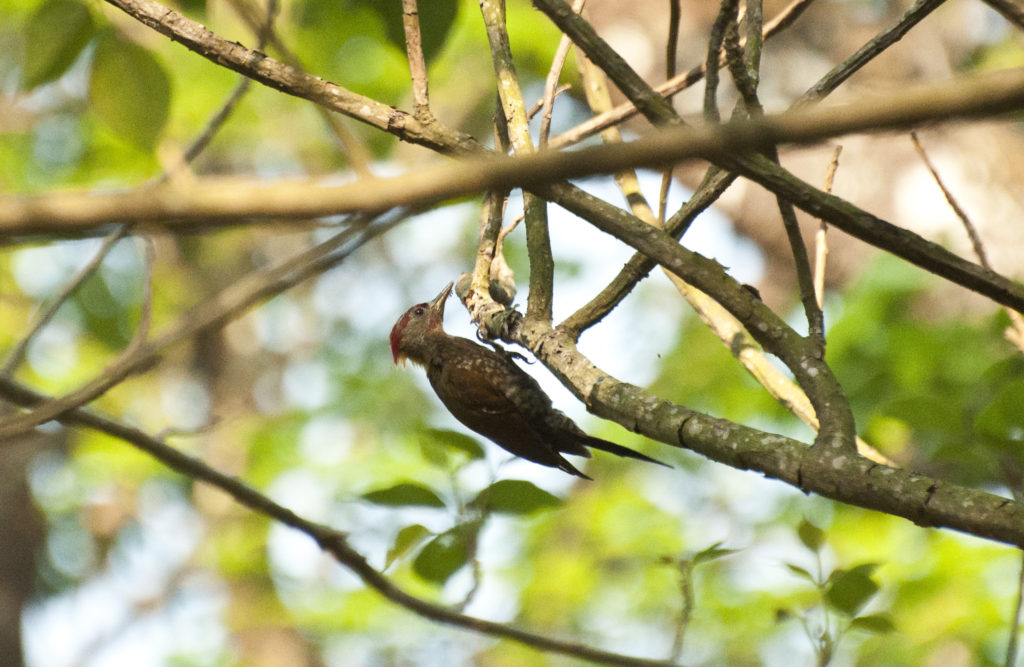
The fifth species of woodpecker which I observed is the Lesser Yellownape (27 cm). This species of woodpecker was observed feeding on prey at the mid-level canopy and ground level live/decaying trees.
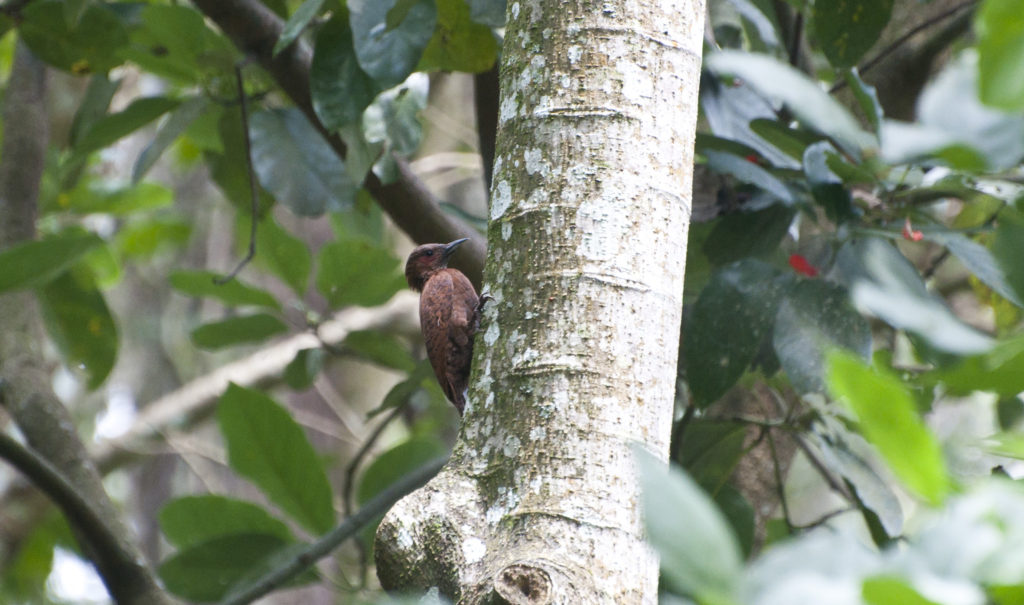
The next species of woodpecker is my favorite of all the woodpeckers. The Rufous Woodpecker is a medium sized woodpecker (25 cm) which has been often observed feeding on tree-ant nests. The woodpecker was observed foraging trees at all heights and also decaying trees at ground level. One of the coolest observations was their preference to build their nests on tree-ant nests.
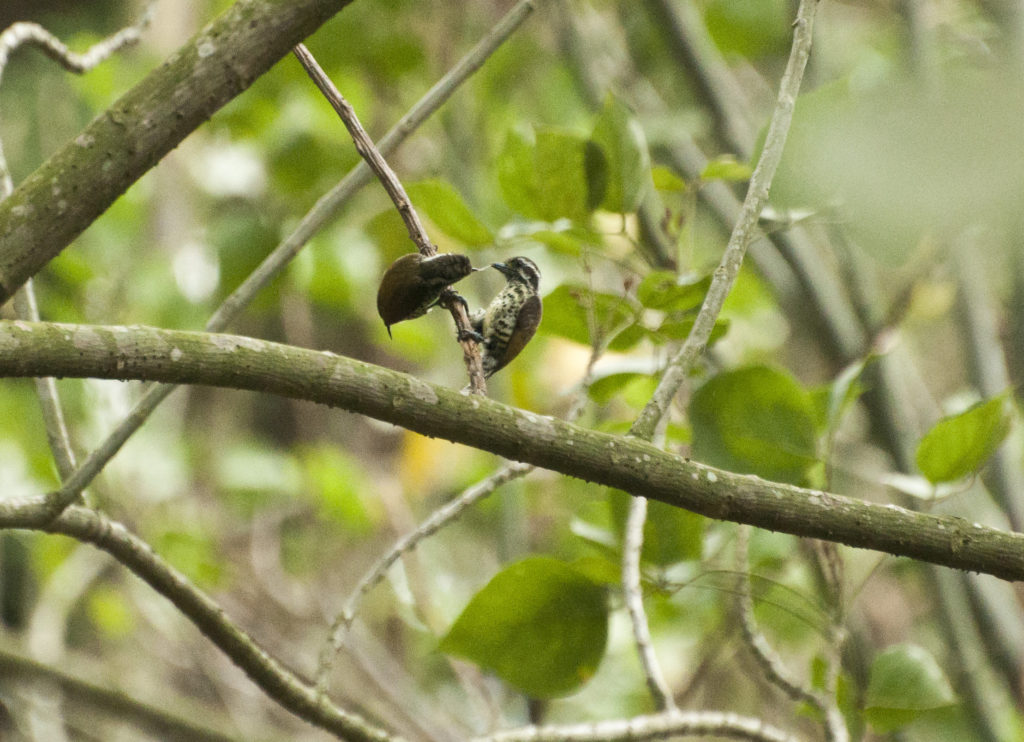
The last species of woodpecker which I observed was the Speckled Piculet. This is the tinniest of the woodpeckers found in India at a size of 10 cm. The woodpeckers were found feeding at the mid-level and decaying trees at ground level.
The woodpeckers are one of the important birds of our ecosystem as they also help us in keeping tree larvae under control. Tree larvae feed on the hardwood of the dead and living trees. The tree larvae are also very important to the ecosystem helping to us in breaking down the dead trees but in some cases invasive beetle larvae can damage the trees severely and even kill the tree based on the larvae infestation. From our observation, we have noticed woodpeckers feeding on larvae at all heights of trees and on both living and decaying. Apart from helping us from severe stem borer infestation, studies have found that the woodpeckers (excavators) also play a key role in survival of other cavity nesting birds which cannot excavate their own nest. The woodpeckers are really cool birds, so enjoy observing them and please don’t forget to update your observation on citizen science application such as e-bird and Indian Biodiversity Portal.
A special thanks to Ashwin Viswanathan for helping in identifying the woodpecker species.
